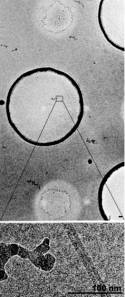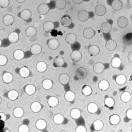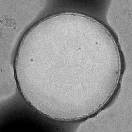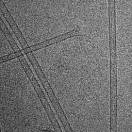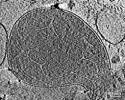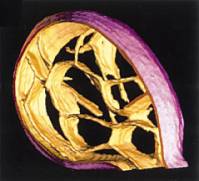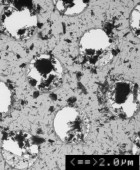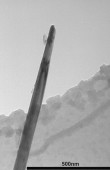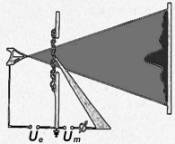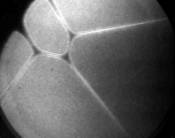Literature
Carragher B, Kisseberth N, Kriegman D, et
al.
Leginon: An automated system for acquisition of images from
vitreous ice specimens
J STRUCT BIOL 132 (1): 33-45 OCT 2000
Ermantraut E, Wohlfart K, Tichelaar W
Perforated
support foils with pre-defined hole size, shape and
arrangement
ULTRAMICROSCOPY 74: 75-81 1998
Fink H-W, Schönenberger C
Electrical conduction
through DNA molecules
NATURE 398: 407-410 1999
Gao H, Spahn CMT, Grassucci RA, Frank J
An assay for
local quality in cryo-electron micrographs of single
particles
ULTRAMICROSCOPY 93: 169-178 2002
Glaeser RM
Electron crystallography: Present
excitement, a nod to the past,
anticipating the future
J STRUCT
BIOL 128 (1): 3-14 DEC 1 1999
Ledoux G, Amans D, Gong J, et al.
Nanostructured
films composed of silicon nanocrystals
MAT SCI ENG C 19: 215-218
2002
Nicastro D, Frangakis AS, Typke D, et
al.
Cryo-electron tomography of Neurosporamitochondria
J
STRUCT BIOL 129 (1): 48-56 FEB 2000
Pulokas J, Green C, Kisseberth N, et al.
Improving
the positional accuracy of the goniometer on the Philips CM series
TEM
J STRUCT BIOL 128 (3): 250-256 DEC 30 1999
Reviakinc I, Bergsma-Schutter W, Morozov AN, et
al.
Two-dimensional crystallization of annexin A5 on phospholipid
bilayers and monolayers: A solid-solid phase transition between crystal
forms
LANGMUIR 17 (5): 1680-1686 MAR 6 2001
Rouiller I, DeLaBarre B, May AP et
al.
Conformational changes of the multifunction p97 AAA ATPase
during its ATPase cycle
NATURE STRUCT BIOL 9 (12): 950-957 DEC
2002
Tao Y, Zhang W
Recent developments in
cryo-electronmicroscopy reconstruction of single particles
CURR OPIN
STRUC BIOL 10 (5): 616-622 OCT 2000
Unger VM
Electron cryomicroscopy methods
CURR
OPIN STRUC BIOL 11 (5): 548-554 OCT 2001
van Heel M, Gowen B, Matadeen R, et
al.
Single-particle electron cryo-microscopy: towards atomic
resolution
QUARTERLY REVIEWS OF BIOPHYSICS 33 (4): 307-369 OCT
2000
Volkmann N, Amann KJ, Stoilova-McPhie S, et
al.
Structure of Arp2/3 Complex in Its Activated State and in Actin
Filament Branch Junctions
SCIENCE 293: 2456-2459 SEP 2001
Weierstall U, Spence JCH, Stevens M, et
al.
Point-projection electron imaging of tobacco mosaic virus at 40
eV electron energy
MICRON 30 (4): 335-338 AUG 1999 | 